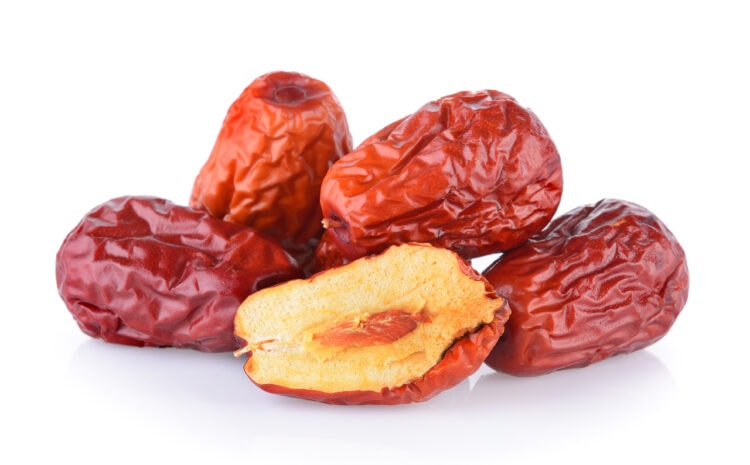What is jujube?
Jujube, also known as Chinese date, is a small brown or dark red fruit that grows on a tree called the jujube tree.
The fruit has a smooth, shiny skin and contains a sweet, crisp flesh that can be eaten fresh or dried.
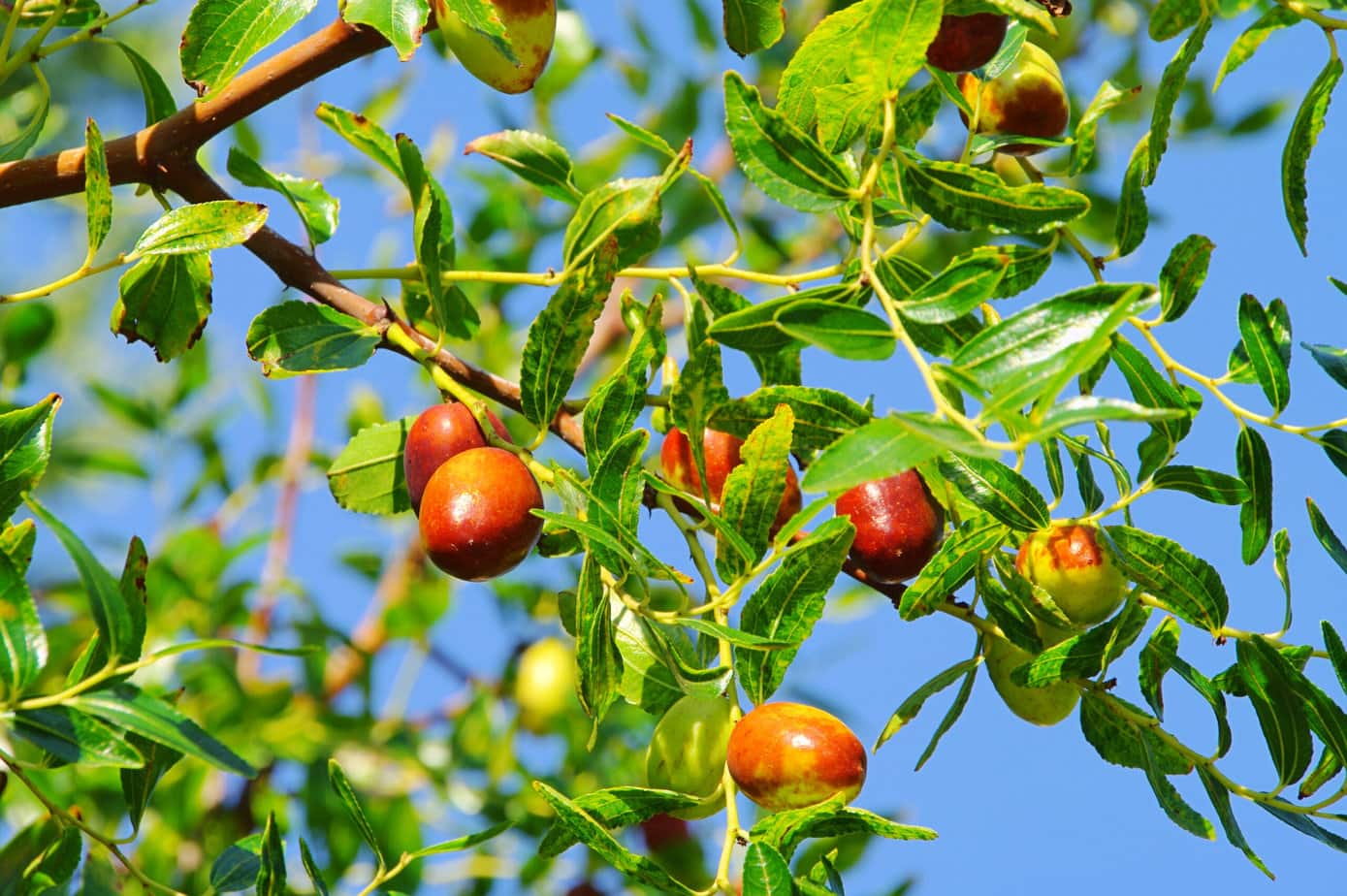
It is grown in warm and temperate regions around the world, especially in China, India, and the Middle East. This fruit is packed with vitamins, minerals, and antioxidants, and is used to make delicious desserts with exotic flavors—but that’s not all!
Origin of jujube
Jujube has a long history that goes back more than 4,000 years. Native to China, it is considered a sacred fruit in Taoism (a Chinese religion), even called the “food of perfect people.” It has also been widely used in traditional Chinese medicine, and even in Europe, to treat insomnia, anxiety, coughs, diarrhea, and stomach pain.
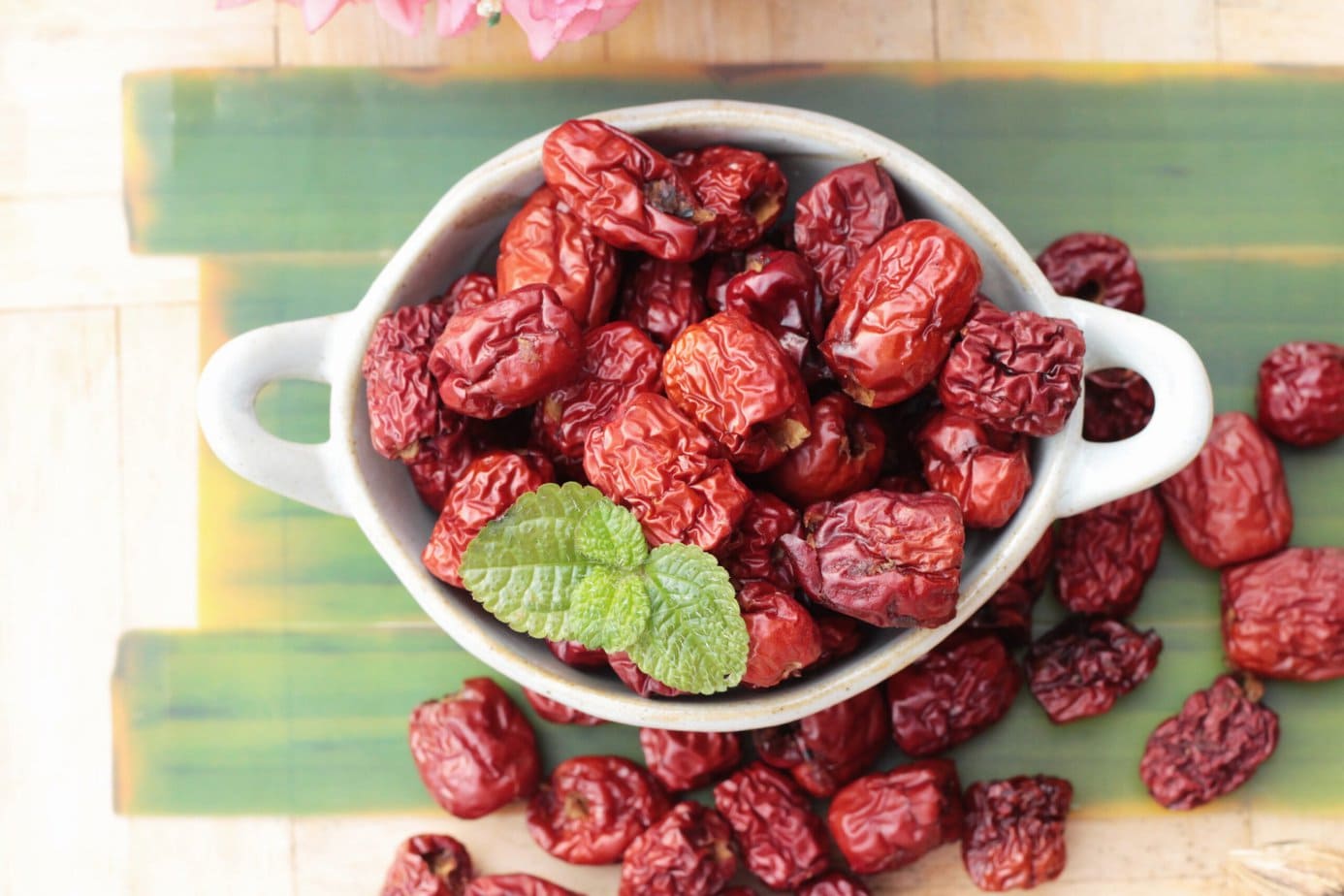
This fruit was first introduced in Asia Minor and the Mediterranean basin, in areas where it was replanted, such as North Africa. It can withstand temperatures as low as -15°C, but it grows best in hot, dry, Mediterranean-type climates.
Over time, jujube became popular not only in Asia but also in other parts of the world, especially during the colonial era. People enjoy it for its sweet flavor and crunchy texture. Beyond its many culinary, medicinal, or cosmetic uses, the wood of the tree is also used in woodworking and instrument making.
The taste of jujube
Fresh jujube has a sweet flavor with a hint of tartness. It’s often described as crisp and juicy, similar to an apple or a pear.
Dried jujubes, on the other hand, have a drier, chewier texture and a sweeter, more concentrated taste than fresh ones. All in all, it’s a subtle and delicate food, great for infusions, desserts, jams, and more.
The health benefits of jujube
Jujube is a nutrient-rich food, making it good for your health. It’s especially high in antioxidants, which help protect your body’s cells and slow down skin aging. The vitamin C it contains helps maintain healthy skin, supports renewal, and aids healing.
In the past, it was even used for medicinal purposes. Jujube was used to improve sleep, digestion, and heart health. In short, it’s a healthy food to add to your recipes!
Jujube vs. goji berry: what’s the difference?
Jujube and goji berry are two types of dried fruit often eaten for their health benefits. Although they look similar, they are actually two different fruits.
First, jujube is a round, reddish-brown fruit that grows on a small tree (the jujube tree!) native to China. You’ll most often find it dried. It’s used to help with anxiety, insomnia, and digestion.
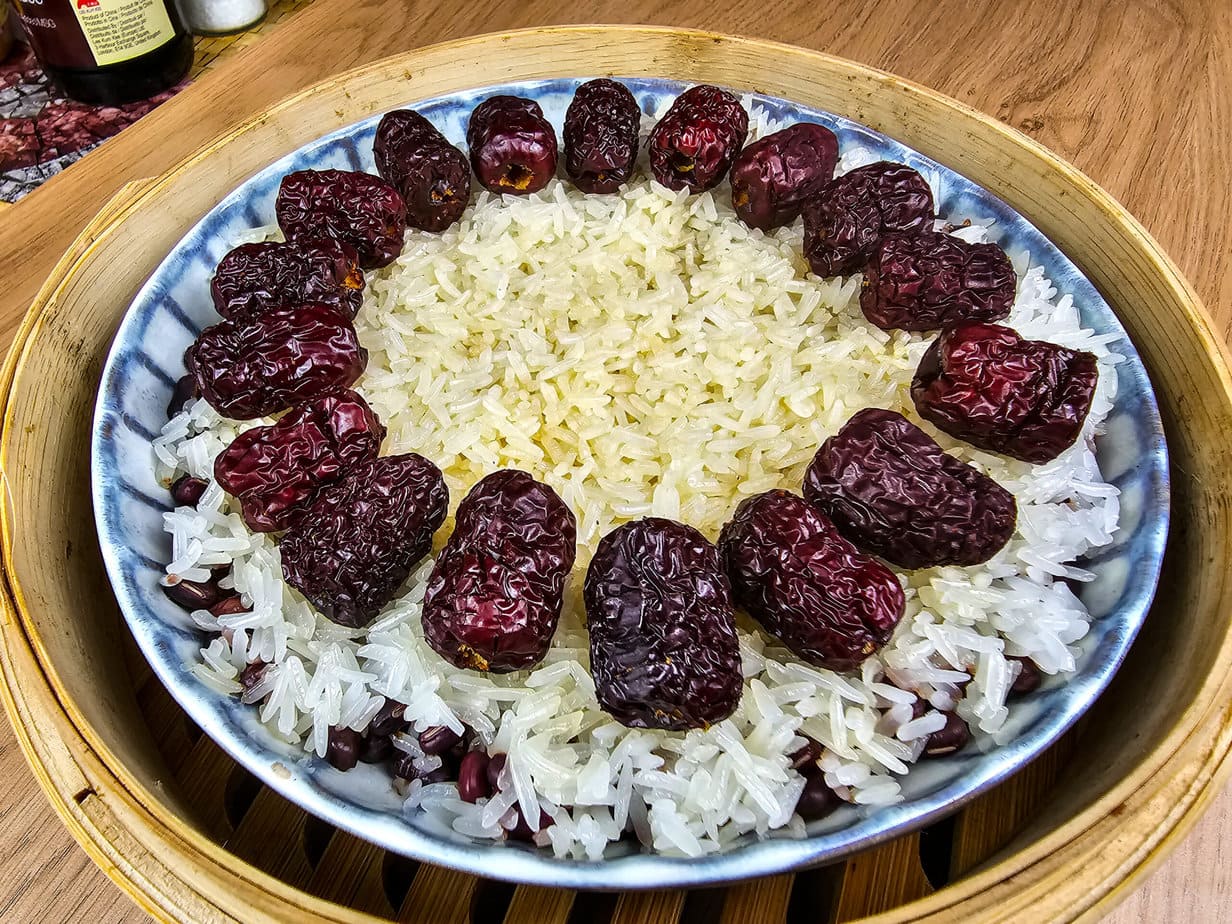
The goji berry, on the other hand, is a small orange-red fruit that also grows on a shrub native to Asia. It’s also often dried and can be eaten for its health benefits, such as improving vision, boosting energy, and supporting the immune system.
So, these are two distinct fruits with different properties that should be distinguished botanically. Also, in terms of taste, jujube naturally has a flavor profile much closer to dates than goji berries.
Jujube in cooking
Jujube can be used in many ways, which is exactly what makes it so versatile. Fresh or dried, add it to sweet dishes like cakes or tarts, fruit salads, and more.
It’s also made into jams and compotes, which can pair well with savory flavors depending on the dish. The advantage of jujube is its mild tartness and sweetness, which really stand out in stews or meat dishes. For example, you’ll find it in Chinese hot pot and in my Chinese hot pot broth recipe.
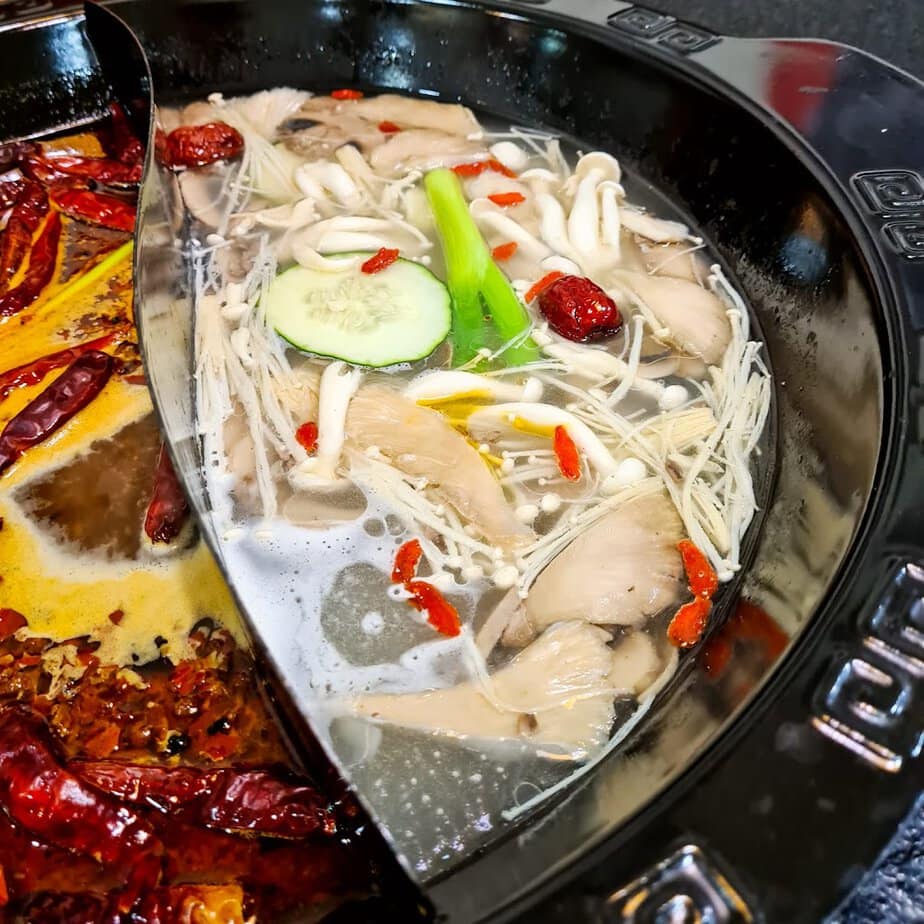
Another way to use jujube: make an infusion. Just boil dried jujubes in water for about twenty minutes. Enjoy it hot or cold, however you like!
Where to find jujube?
In Europe, you’ll most often find jujube in its dried form. If you’re looking for it fresh, it’s harder to find than dried jujube. Sometimes you need a bit of luck—not every Asian grocery store carries it.
The advantage of dried jujubes is that you can store them for longer. Still, make sure you buy a quality product, even when dried!
How to store jujube?
If you’re lucky enough to find fresh jujubes, keep them in a cool, dry place. Ideally, store them in an airtight bag in the fridge.
This way, they’ll last 1 to 2 weeks. If you want to keep them even longer, you can simply freeze them.
If they’re dried, jujubes should be kept away from light. Store them in an airtight container and they’ll keep for several months.
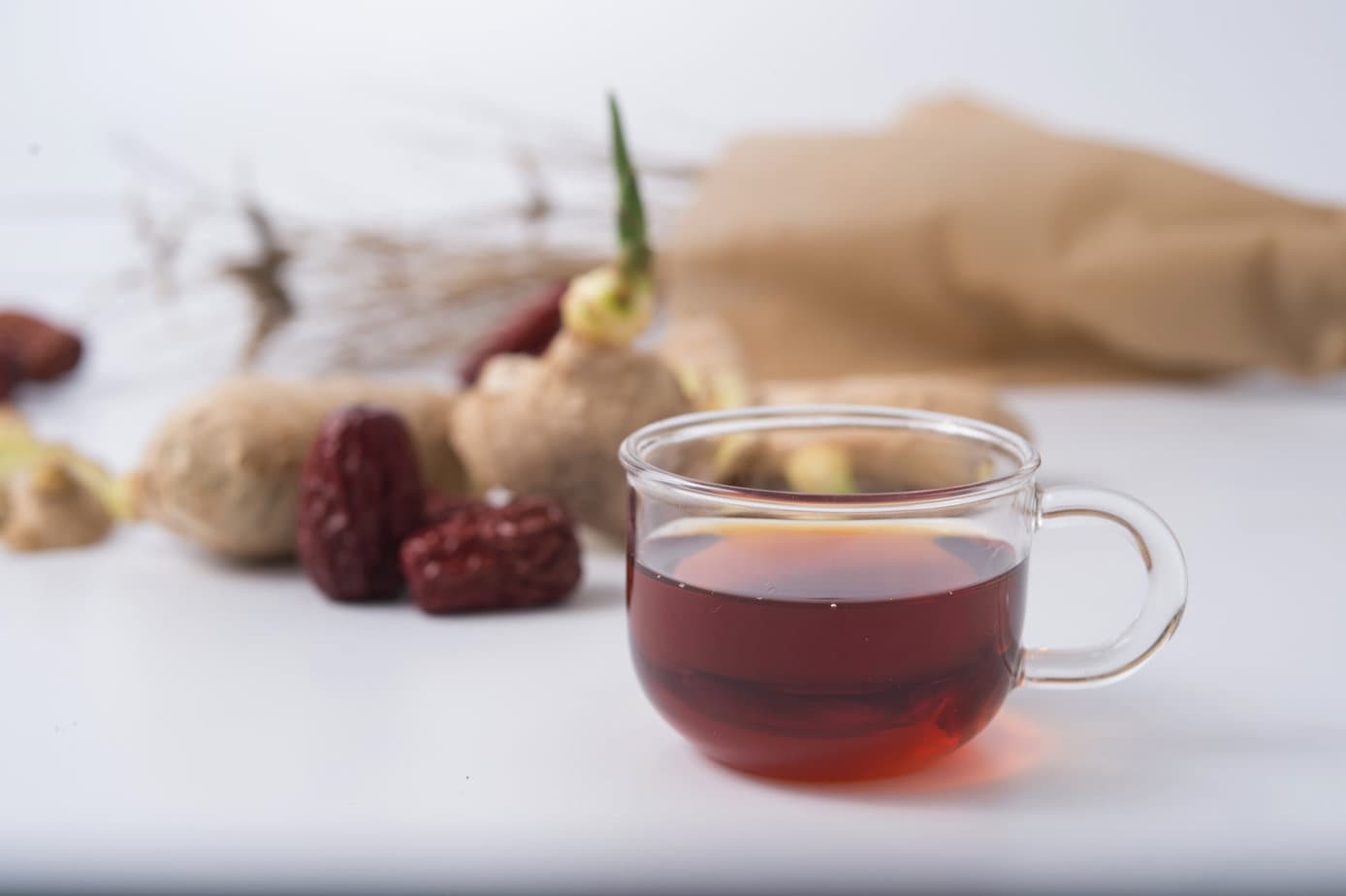
Ingredients
- 60 g jujubes
- 5 g goji berries
- 1 piece of ginger sliced
- 1 tablespoon brown sugar
Instructions
- Place the jujubes in a large bowl and cover with water. Soak for 10 minutes, then gently rub their skins to remove any dust. Drain and discard the water. Halve the jujubes and remove the pits.
- Rinse the goji berries under cold water, gently rubbing to remove any surface dirt.
- Combine the jujubes, goji berries, and ginger in a small saucepan and add the water.
- Bring to a boil over medium-high heat. Reduce to medium-low and simmer for 10 minutes.
- Strain through a small sieve, pressing on the jujubes to extract as much liquid as possible.
- Stir in the brown sugar until dissolved. Taste and add more sugar if needed. Serve hot.
